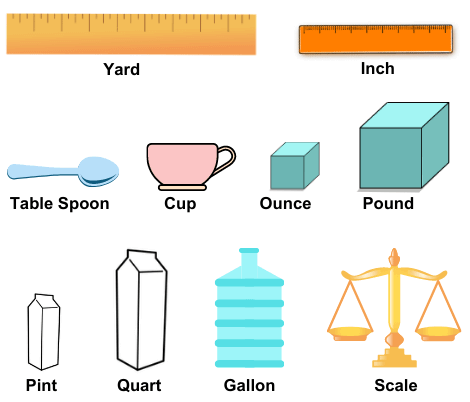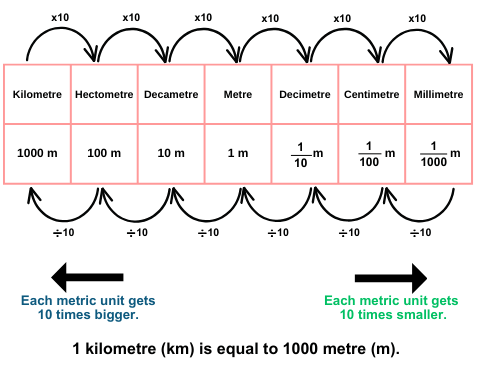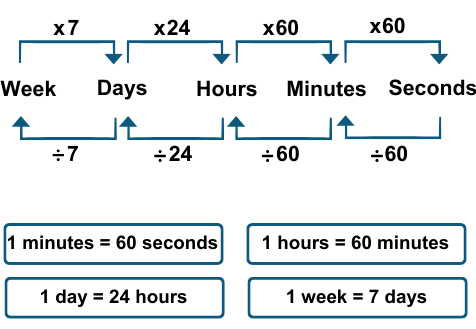Conversion of Unit of Measurement | Mathematics Olympiad Class 4 PDF Download
What is the Unit of Conversion?
The "unit of conversion" refers to the particular unit or measurement used during the process of converting from one unit to another. Essentially, it's the starting unit that you wish to convert into a different unit, such as changing kilometers to meters, milligrams to kilograms, or days to hours. These units facilitate comparing and comprehending quantities expressed in various measurement systems.

How to Convert Unit of Measurement?
To convert units of measurement, follow these steps:
- Determine the starting unit and the target unit.
- Locate the conversion factor that links the two units (e.g., 1 meter = 100 centimeters).
- Apply the conversion factor by multiplying or dividing the quantity you're converting.
- Carry out the calculation to get the converted value in the desired unit.
- Present the result with the correct unit and appropriate precision.
Keep in mind that while the numerical value may change, the actual quantity remains constant, ensuring clarity and consistency across different measurement systems.
Conversion of Units of Weight

1 kilogram (kg) is equal to 1000 grams (g).
To convert from kg to g: Multiply the number of kilograms by 1000.
Example: 5 kg = 5 x 1000 = 5000 g
To convert from g to kg: Divide the number of grams by 1000.
Example: 5000 g = 5000/1000 = 5 kg
Conversion of Units of Capacity

To convert litres (L) to millilitres (mL): Multiply the number of litres by 1000.
Example: 2 litres = 2 x 1000 = 2000 millilitres
To convert millilitres (mL) to litres (L): Divide the number of millilitres by 1000.
Example: 2000 millilitres = 2000 / 1000 = 2 liters
Conversion of Units of Length

1 kilometre (km) is equal to 1000 metres (m).
To convert kilometres(km) to metres(m): Multiply the number of kilometres by 1000.
Example: 7 km = 7 x 1000 = 7000 metres
To convert metres (m) to kilometres(km): Divide the number of metres by 1000.
Example: 7000 metres = 7000 / 1000 = 7 km
Conversion of Units of Time

1 hour(h) is equal to 60 minutes(m).
To convert hours to minutes: Multiply the number of hours by 60.
For example, 3 hours = 3 x 60 = 180 minutes
To convert minutes to seconds: Multiply the number of minutes by 60:
For example, 180 minutes = 180 x 60 = 10,800 seconds
To convert minutes to hours: Divide the number of minutes by 60:
For example, 180 minutes ÷ 60 = 3 hours
To convert seconds to minutes: Divide the number of seconds by 60:
For example, 10,800 seconds ÷ 60 = 180 minutes
Conversion of Day to Hours, Week to Days, Year to Days

Day to hours:
Conversion factor: 24 hours/day
Example: 3 days = 3 x 24 hours = 72 hours
Week to days:
Conversion factor: 7 days/week
Example: 2 weeks = 2 x 7 days = 14 days
Year to days:
Conversion factor: 365 days/year (or 366 days in a leap year)
Example 1: 1 year = 365 days = 365 x 1 = 365 days
Example 2: 2 years = 2 x 365 days = 730 days
Use of >, < and = in Problems Based on Comparison of Measurements
The symbols '>', '<' and '=' are used in problems based on comparison of measurements to represent the relative size of two or more quantities.
1. Greater than: The symbol '>' is used to indicate that one quantity is greater in value than another. For example:
A = 51 cm
B = 49 cm
A > B
2. Less than: The symbol '<' is used to indicate that one quantity is smaller in value than another. For example:
X = 12 cm
Y = 13 cm
X < Y
3. Equal to: The symbol '=' is used to indicate that two or more quantities have the same value. For example:
P = 45 cm
Q = 45 cm
P = Q
Note: It is important to keep in mind that these symbols are used to compare only the values of the quantities not the units of measurement.
|
33 videos|96 docs|46 tests
|
FAQs on Conversion of Unit of Measurement - Mathematics Olympiad Class 4
| 1. What is the Unit of Conversion? |  |
| 2. How to Convert Unit of Measurement? |  |
| 3. How to Convert Units of Weight? |  |
| 4. How to Convert Units of Capacity? |  |
| 5. How to Convert Units of Length? |  |





















